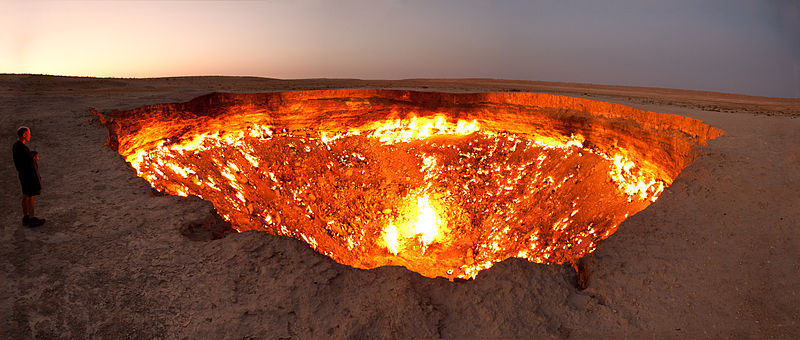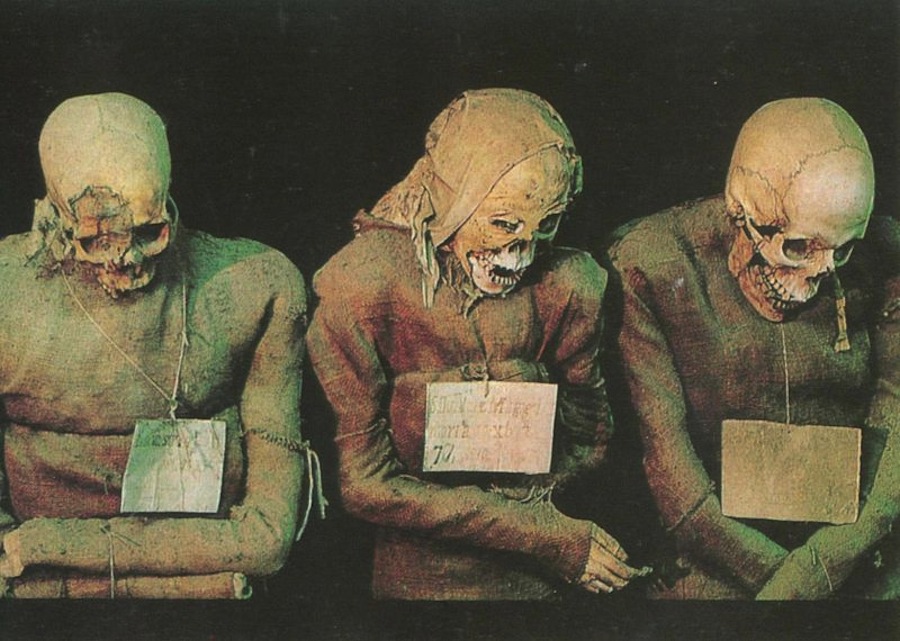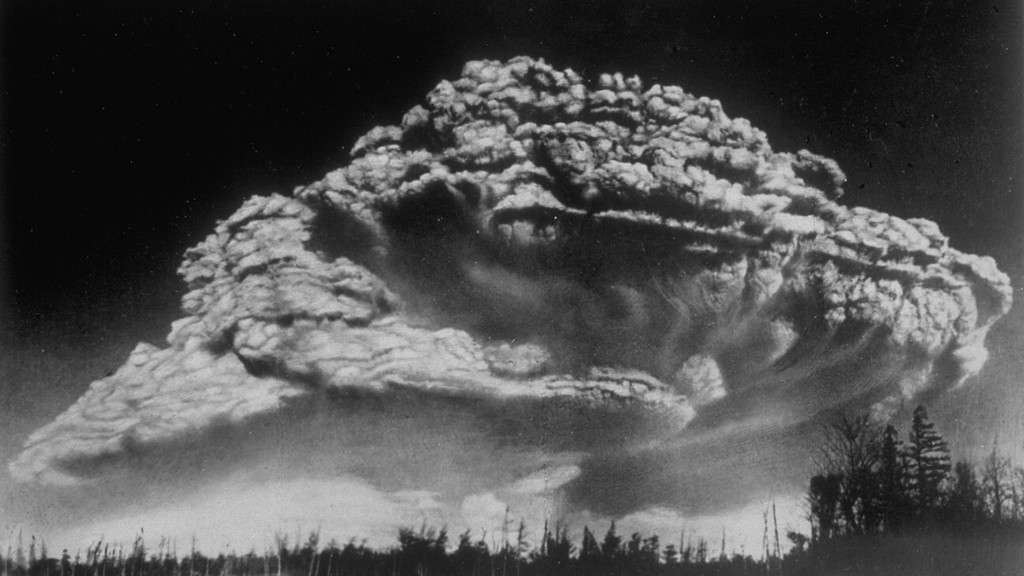The Scariest Places on Earth
Door to Hell, Turkmenistan

This next spooky spot is quite literally hell on Earth. Commonly known as the "Door to Hell," the natural gas crater pictured above can be found in Derweze, Turkmenistan.
Located in the Karakum Desert, the Door to Hell became a 230-foot-wide (70 meters) burning hole back in 1971. That's when a group of engineers drilling for oil accidentally tapped into a pocket of natural gas, which caused their drilling rig to collapse and form a crater. Fearing that poisonous methane gas would seep out of the crater, the engineers decided to set the gas on fire. The engineers expected the natural gas reserve they had disrupted to burn for a few weeks, but they clearly underestimated the inferno. The Door to Hell continues to burn to this day.
Beelitz-Heilstätten hospital

What's so creepy about Beelitz-Heilstätten hospital in the German state of Brandenburg? It's hard to choose just one thing; it could be the crumbling vine-covered buildings, the abandoned medical equipment, the rusty hospital beds or the fact that the hospital once treated Nazi leader Adolf Hitler.
Hitler was a patient at Beelitz-Heilstätten after he sustained a leg injury at the Battle of Somme in 1916. The hospital was later occupied by Soviet forces and remained a Soviet military hospital until the 1990s. Some parts of the hospital remain open to patients, while others are frequented by camera-toting explorers.
Capuchin Catacombs

Most catacombs are a little eerie, but the Capuchin Catacombs of Palermo, Sicily, in southern Italy, are truly freaky. The catacombs contain about 8,000 skeletons and more than 1,000 mummified bodies. But what's strange about these corpses is that most of them are wearing clothes, and some of them are posing together in little groups.
One of the best-known mummies of Capuchin is that of 2-year-old Rosalia Lombardo, an Italian child who died of pneumonia in 1920. Her corpse is so well preserved by embalming fluids that she appears to be merely sleeping nearly 100 years after her death.
Sedlec Ossuary

If mummified corpses are a bit too much for you to stomach, then perhaps you should skip Sicily and head straight to the Czech Republic's Sedlec Ossuary. Located beneath a cemetery, the ossuary (or catacomb) contains the bones of an estimated 40,000 to 70,000 people. But, it's not the bones themselves that are freaky; it's the way the bones are presented.
Get the world’s most fascinating discoveries delivered straight to your inbox.
In the late 1800s, the woodcarver František Rint was hired to organize the bones in the ossuary, which had become a bit overcrowded. Rint took some artistic liberties, carefully arranging the bones to create a giant chandelier, a coat of arms and other ghastly decorations. The morbid artist even signed his name in bone on the ossuary wall.
"The Boneyard" (Monthan Air Force Base)

Let's move on to a different kind of cemetery — one where old military aircraft go to die. The Davis Monthan Air Force Base in Tucson, Arizona, is commonly referred to as "The Boneyard." And while this spot might not be super scary, it certainly looks like the backdrop for a post-apocalyptic thriller. In fact, this 600-acre cemetery of steel has been captured on film before. It was the setting for the video "Learning to Fly" by Tom Petty and the Heartbreakers.
This strange graveyard contains almost every plane flown by U.S. military pilots since World War II, including the B-52 StratoFortress and the much newer F-14 Tomcat. But don't try to enter this private Air Force Base because it's not open to the public. However, you can gawk at the dusty metal carcasses on Google Earth (try coordinates 32 08'59.96" N, 110 50'09.03"W).
Death Valley

Yes, the name itself is sinister, but Death Valley has its name for a reason. Spend too much time in the area the hottest, driest and lowest place in North America and you'll learn why early settlers bestowed such a forbidding name upon the place.
Nestled between steep mountains, Death Valley stretches for 140 long, hot miles (225 kilometers), and lies 282 feet (86 meters) below sea level. In July, temperatures hover around 115 degrees Fahrenheit (46 degrees Celsius). The scorched valley boasts the second-highest temperature ever recorded, a stunning 134 F (57 C) in July of 1913.
Make sure to bring plenty of water if you visit. Large parts of the valley have no cell phone coverage, so you may not be able to call for help.
Australia

This continent is rife with biting beasts that may not steal your eternal soul but can definitely do some nasty things to your corporeal parts.
It's the only place on Earth where venomous snakes outnumber non-venomous snakes. Australia's brown snakes and tiger snakes can kill humans with a single strike, but life-saving anti-venom treatments are widely available.
However, no amount of anti-venom can protect against the saltwater crocodile, one of Australia's most dangerous animals. Common in the northern Outback, the crocs kill one or two people a year. They are monstrous; the largest males can grow up to almost 23 feet (7 meters) long, and they are very aggressive.
Add to that the infamous great white shark and a host of venomous creatures the deadly box jellyfish, the blue ring octopus, the creepy-looking stone fish, dangerous spiders and Australia lives up to its reputation as a spot that'll toughen you up if it doesn't kill you first.
Central Africa

Perfect for aspiring Dr. Frankensteins, pretty scary for everybody else. This area gets more lightning strikes than any other place on the planet, as shown in this satellite map of global lightning flash density.
The average lightning bolt carries about 30,000 amps of charge, has 100 million volts of electric potential, and is about 50,000 F (27,760 C). Lightning strikes are the second-deadliest weather-related threat in the United States, killing, on average, 58 people a year.
The odds of being struck in your lifetime (if you live to be 80) are 1 in 3000 in the United States, but probably a bit higher if you spend time in the planet's lightning capital.
Komodo Island, Indonesia

On Komodo Island no one can hear you scream...at least the Komodo dragons can't. Their ears can't pick up high-pitched frequencies like a human howling in pain, but their tongues can smell you, even if you are hiding a couple of miles away.
The largest lizards in the world, these cannibalistic, scavenging, predatory monsters would do well in a B-grade horror movie. Not only are they big and scary-looking, they're also just plain gross.
The largest recorded Komodo was 10.3 feet (3.13 m) long and weighed 366 pounds (166 kg).
Komodo dragons eat carrion, but they also hunt, attacking everything from smaller lizards to rodents to water buffalo. To kill, the Komodos will knock an animal off its feet and tear it to pieces. If the Komodo's large, serrated teeth don't do the trick, the venom and deadly bacteria in a Komodo's saliva will kill any animal that escapes within a few days, and the dragons can then feast on the carcass.
The lizards are efficient eaters, polishing off bones, hide, hooves, even intestines to clean out the feces of their victims, they vigorously swing the innards around. Since Komodo dragons are cannibalistic, juveniles often roll in fecal matter. The smell keeps the bigger adults from turning the little ones into breakfast.
Antarctica

During the Antarctic winter, darkness rules the land. From late March until mid-September, the sun never appears above the horizon, vicious blizzards can reduce visibility to just a few feet, and temperatures stay around or below minus 76 F (minus 60 C).
Vostok Station, a Russian research center, holds the record for the lowest temperature ever recorded at the surface of the Earth: minus 128 F (minus 89.2 C), in 1983.
If you don't freeze to death on the southernmost continent, you might die of loneliness. Antarctica is the only continent on Earth with no native population. Only scientists and adventurers spend time in this windswept, frozen, forsaken place.


